Indian Independence Movement (Freedom Struggle) Quiz:
Udham Singh returned to India in 1928 mainly because he was:
(a) short of funds to meet his expenses
(b) to produce some arms from Lahore
(c) to escape from the British police
(d) called by a revolutionary in India
Do or Die was one of the most powerful slogans of India’s freedom struggle. Who gave it ?
(a) M. K. Gandhi
(b) J.L. Nehru
(c) Balgangadhar Tilak
(d) Subhash Chandra Bose
Which of the following was the chief organizer of the Revolt of 1857 in Bihar ?
(a) Amar Singh
(b) Kunwar Singh
(c) Pir Ali
(d) Imaduddin
The first split in the Indian National Congress took place at
(a) Surat
(b) Calcutta
(c) Allahabad
(d) Madras
The main founder (s) of the Swaraj party was/were
(a) Cr Das
(b) Motilal Nehru
(c) Madan Mohan Malaviya
(d) Only (a) And (b) Above
On October 17, 1940, the individual Satyagraha was inaugurated by
(a) Sardar Vallabhbhai Patel
(b) Jawaharlal Nehru
(c) M.K. Gandhi
(d) Acharya Vinoba Bhave
Related: Cloze passage exercises
Who is regarded as the Father and Founder of The Indian National Congress?
(a) Dadabhai Naoroji
(b) Sn Banerjee
(c) Ao Hume
(d) Pheroze Shah Mehta
The Simon Commission was appointed in
(a) 1927
(b) 1928
(c) 1929
(d) 1930
The main center of revolt, first recaptured by the British, was
(a) Delhi
(b) Lucknow
(c) Kanpur
(d) Jhansi
Who was the first to raise the slogan ‘inquilab zindabad’?
(a) Bhagat Singh
(b) M Kelappan
(c) Veer Savarkar
(d) Shankaran Nair
In March 1942, British Prime Minister Winston Churchill appointed the Cripps Mission to resolve the Indian political crisis because
(a) he was under pressure from US President Roosevelt
(b) of the gravity of the Japanese War Menace on India’s Borders
(c) Both reasons
Related: Financial Quiz Questions with Answers
The Roots of the 1857 Revolt lay in
(a) Blatantly Discriminatory Policies
(b) Exploitative Land Revenue Policy
(c) The Policy Of Greased Cartridges
(d) All of these
The Treaty between Ranjit Singh and the British was signed at
(a) Allahabad
(b) Amritsar
(c) Kashmir
(d) Agra
The Congressmen who wanted to contest the elections under the act of 1919 and enter the legislature, formed a party (1923) called
(a) Swaraj Party
(b) Congress Swarajya Party
(c) Nationalist Party
(d) Liberal Party
Which of the following was not one of the storm-centres of the Revolt of 1857 ?
(a) Bareilly
(b) Jhansi
(c) Madras
(d) Arrah
The Non-Cooperation Movement was Suspended in February 1922 on Account of
(a) The Chauri Chaura Incident
(b) Hindu Muslim Riots
(c) Arrest Of Gandhiji And His Imprisonment For Six Years
(d) All of these
‘The Times Of India’ Which Celebrated Its 150th Anniversary In 1988, Was First Published In 1838 As
(a) Bombay Chronicle
(b) Bombay Times
(c) Indian Times
(d) National Times
Related: Biggest Religions in the World
Ram Prasad Bismil had been associated with the case?
(a) Alipore Bomb
(b) Kanpur Conspiracy
(c) Kokori Bomb
(d) Meerut Conspiracy
Aligarh Muslim University was founded by
(a) Jinnah
(b) Syed Ahmed Khan
(c) Abul Kalam Azad
(d) Bhutto
A Resolution declaring ‘Purna Swaraj’ was passed in the Congress session held at
(a) Lahore
(b) Calcutta
(c) Gaya
(d) Haripura
Where did the sepoys break out in open revolt on May 10, 1857 ?
(a) Kanpur
(b) Barrackpore
(c) Berhampore
(d) Meerut
Which of the following was the ‘Newspaper’ of Annie Besant?
(a) The Hindu
(b) Indian Express
(c) The Times Of India
(d) New India
The Tata Iron and Steel Works was completed with the aid of
(a) Japanese Experts
(b) Russian Experts
(c) American Experts
(d) French Experts
Related: Bearer Cheque meaning
Who Gave The Slogan ‘Inquilab Zindabad’?
(a) Bhagat Singh
(b) Subhash Chandra Bose
(c) Md Iqbal
(d) Chandra Shekhar Azad
The revolutionary who was accused in the Lahore conspiracy case and who died in jail after 64 days fast was
(a) Jatin Das
(b) MM Malviya
(c) Sukh Dev
(d) Raj Guru
At Jallianwaia Bagh meeting ____ ordered the troops to open fire.
(a) Benn
(b) Irwin
(c) Dyer
(d) Montagu
At Barrackpore, Mangal Pandey was hanged on March 29, 1857 and became a martyr. His crime was that he :
(a) Refused to obey his officers
(b) Refused to use the greased cartridges
(c) Incited his fellow sepoys not to use the greased cartridges
(d) Revolted and attacked his superior officers
The Indian National Congress Was Founded In The Year
(a) 1958
(b) 1977
(c) 1885
(d) 1909
The system of civil services was introduced into India By
(a) Lord Ripon
(b) Lord Dalhousie
(c) Lord Bentick
(d) Lord Hastings
Related: good Music Quiz questions and answers
Of the following, Who Did Not Oppose The Non-Cooperation Resolution?
(a) Madan Mohan Malaviya
(b) C R Das
(c) Mrs Besant
(d) Nehru
The Indian Independence Act Was Passed In
(a) July 1947
(b) August 1947
(c) June 1947
(d) September 1947
Where did the first signs of unrest appear early in 1857 ?
(a) Awadh
(b) Bengal
(c) Meerut
(d) Upper Provinces
Of the following who died as a political prisoner in Lahore prison?
(a) Bhagat Singh
(b) Batukeshwar Dutt
(c) Jatin Das
(d) Sukh Dev
With Whom Is The Slogan “Do Or Die” Associated?
(a) Subhas Chandra Bose
(b) Lala Lajpat Rai
(c) Bal Gangadhar Tilak
(d) Mahatma Gandhi
Related: List of currencies of the world by countries
Loamanya Bal Gangadhar Tilak Hailed Form
(a) Bengal
(b) Kashmir
(c) Maharashtra
(d) Tamil Nadu
Who is the First Governor Of India?
(a) Clive
(b) Comwallis
(c) Warren Hastings
(d) Wellesley
Who Was The Congress President At The Time When India Become Free?
(a) Jawaharlal Nehru
(b) V L Pandit
(c) Sardar Patel
(d) J B Kripalani
Lord Dalhosie’s single measure, which went a long way in spreading the Revolt of 1857, was:
(a) Annexation of native states on the plea of mismanagement
(b) Introduction of railway, post and telegraph
(c) Stopping or reducing the pensions of former Indian rulers
(d) Indiscriminate application of the Doctrine of Lapse
The Revolt Of 1857 In Awadh And Lucknow Was Led By
(a) Wajid Ali Shah
(b) Begum Hazrat Mahal
(c) Asaf-Ud-Daula
(d) Begum Zeenat Mahal
Related: Time and Distance Question Bank
One Of The Best Known Tribal Rebellions In Bihar, Known As Ulgulan (Meaning Great Tumult), Was Launched By The Mundas Under The Leadership Of
(a) Kanhu
(b) Sidhu
(c) Birsa Munda
(d) Rampa Munda
Who Is The Author Of Vande Mataram?
(a) Mahatma Gandhi
(b) Rabindranath Tagore
(c) Bankim Chandra Chatterjee
(d) Sarat Chandra Chatterjee
After The Initial Success Of The Revolt Of 1857, The Objective For Which The Leaders Of The Revolt Worked Was
(a) To Restore The Former Glory To The Mughal Empire
(b) To Form A Federation Of Indian States Under The Aegis Of Bhadur Shah II
(c) Elimination Of Foreign Rule And Return Of The Old Order
(d) Each Leader Wanted To Establish His Own Power In His Respective Region
Who announced that after the death of Bahadur Shah Zafar, the family of the king would be shifted out of the Red Fort ?
(a) King George V
(b) Queen Victoria
(c) Canning
(d) Dalhousie
The Revolt Of 1857 Failed Mainly Because
(a) Of Superior Resources of the British Empire
(b) It was poorly organized And The Rebels Had No Common Ideal
(c) It had very little Nationalist Sentiment
(d) It was localized, restricted and scattered
Related: Greek God quiz
A 19th century social reformer who is regarded as the bridge between the past and the future is
(a) Keshab Chandra Sen
(b) Devendra Nath Tagore
(c) Ishwar Chandra
(d) Raja Ram Mohun Roy
Who composed the song “Sare Jahan Se Achha Hindostan Hamara”?
(a) Mohammed Iqbal
(b) Josh Malihabadi
(c) Bhagat Singh
(d) Chandra Shekhar Azad
Who threw two bombs on the door of the central assembly in New Delhi on April 8, 1929?
(a) Bhagat Singh
(b) Batukeshwar Dutt
(c) Both
(d) None of these
The personal grievance of Nana Saheb, on account of which he became a staunch anti-British and raised the banner of Revolt in 1857, was:
(a) His claim to Peshwaship was abolished
(b) The British refused to pay him the pension earlier paid to his father, Peshwa Baji Rao II
(c) The British humiliated him by declaring that he was not a natural son of Bajirao II
(d) The British forced him to abandon his ancestral palace and to reduce his entourage
Two Great Socio-Religious reformers of the 19th century who provided inspiration to the Indian National movement were
(a) Dayanand Saraswati and Vivekananda
(b) Raja Ram Mohan Roy and Debendra Nath Tagore
(c) Mg Ranade And Dk Karve
(d) Keshab Chandra Sen And Ishwar Chandra Vidyasagar
The British Empire came to an end in India by passing __
(a) Indian Independence Act 1947
(b) Indian Independence War Act 1947
(c) Indian Independence Act 1948
(d) India-Pakistan Independence Act 1946
Related: Legal Aptitude question and answers
Udham Singh returned to India in 1928 mainly because he was:
(a) short of funds to meet his expenses
(b) to produce some arms from Lahore
(c) to escape from the British police
(d) called by a revolutionary in India
The Cabinet Mission came to Delhi in
(a) 1938
(b) 1946
(c) 1944
(d) 1935
Tilak Swarajya Fund was started to finance the
(a) Khilafat Movement
(b) Rowlatt Act
(c) Home Rule Movement
(d) Non-Cooperation Movement
The monopolistic rule of the East India Company was brought under the direct control of British Empire in
(a) 1793
(b) 1754
(c) 1773
(d) 1781
Partition of Bengal was done during the period of:
(a) Lord Curzon
(b) Lord Clive
(c) Lord Cornwallis
(d) Lord Dalhousie
With reference to the Indian freedom struggle, Usha Mehta is well-known for
(a) Running the secret Congress Radio in the wake of the Quit India Movement
(b) Participating in the Second Round Table Conference
(c) Leading a contingent of the Indian National Army
(d) Assisting in the formation of the Interim Government under Pandit Jawaharlal Nehru
Related: Quiz Explorer and Travellers in History
The national song has been taken from
(a) Bharat Vidhata article written by B.C. Chatterjee
(b) Totva-Bodhini Patrika edited by Tagore
(c) Novel Durgesh Nandini by B.C. Chatterjee
(d) Novel Anand Math by B.C. Chatterjee
In 1947, 532 princely states were annexed to India except three. Which of the following was not among the three princely states?
(a) Junagarha
(b) Bhavnagar
(c) Hyderabad
(d) Kashmir
Of the following European nations, only the ___ did not attempt to establish trading centers in India.
(a) Britishers
(b) Dutch
(c) French
(d) Italians
Rabindranath Tagore surrendered His Knighthood in Protest against
(a) Martial Law In The Punjab
(b) Jallianwala Bagh Tragedy
(c) Rawlatt Acts
(d) All The Above
Khan Abdul Gaffer Khan’s which action was performed in favor of Indian independence, but was against the English men?
(a) Formation of Lal-Kurti sena
(b) Assassination of an Englishman
(c) Trade of red shirts
(d) Demand for Pakhtunistan
What was the purpose with which Sir William Wedderburn and W. S. Caine had set up the Indian Parliamentary Committee in 1893 ?
(a) To agitate for Indian political reforms in the House of Commons
(b) To campaign for the entry of Indians into the Imperial Judiciary
(c) To facilitate a discussion on India’s Independence in the British Parliament
(d) To agitate for the entry of eminent Indians into the British Parliament
Related: Maharashtra CM list
The Simon Commission was appointed in
(a) 1927
(b) 1928
(c) 1929
(d) 1930
Who did not participate in the revolt of 1857?
(a) Rani Lakshmibai
(b) Bhagat Singh
(c) Tantya Tope
(d) Nana Saheb
To Avenge The Brutal Lathi Charge On Lala Lajpat Rai (October 30, 1928), Which Was Believed To Have Caused His Death Subsequently, Who Murdered Saunders, The Assistant Superintendent Of Police, Lahore?
(a) Batukeshwar Dutt
(b) Bhagat Singh
(c) Chandra Shekhar Azad
(d) Sachindra Sanyal
The Interim Government Which Took Office On September 2, 1946 Was Headed By
(a) Raj Endra Prasad
(b) Jawaharlal Nehru
(c) Vallabhbhai Patel
(d) C Rajagopalachari
When Was The First Independence Day Unofficially Celebrated Before Independence?
(a) On 26th January 1929
(b) On 26th January 1931
(c) On 26th January 1935
(d) On 26th January 1930
Related: Data interpretation questions with solutions pdf
India Was Partitioned As A Consequence Of The Formula Contained In
(a) Cabinet Mission Plan
(b) Attlee’s Declaration
(c) June 3 Plan Or Mountbatten Plan
(d) None of these
In What Session Did Congress declare Complete Independence (Poorna Swaraj) As Its Goal?
(a) Lahore Session Held In 1929
(b) Madras Session Held In 1927
(c) Ahmadabad Session Held In 1921
(d) Gaya Session Held In 1922
When Was The First Round Table Conference Held?
(a) 1933
(b) 1931
(c) 1930
(d) 1903
The First Indian To Enter The Indian Civil Service Was
(a) Gokhale
(b) Satyendra Nath Tagore
(c) Ramanuja
(d) Rabindranath Tagore
Related: Quiz on the Indus Valley Civilization
Which Of The Following Leaders Died As A Result Of Injuries Sustained During A Protest Demonstration Against Simon Commission?
(a) Bal Gangadhar Tilak
(b) Dadabhai Naoroji
(c) Goplakrishna Gokhale
(d) Laia Lajpat Rai
Goa had been first colonized by the
(a) British
(b) Dutch
(c) Portuguese
(d) French
Related: Dharma quiz
The Lahore Session of the Indian National Congress (1929) is very important in history, because
- the Congress passed a resolution demanding complete independence
- the rift between the extremists and moderates was resolved in that session
- a resolution was passed rejecting the two-nation theory in that Session
Which of the statements given above is/are correct?
(a) 1 only
(b) 2 and 3
(c) 1 and 3
(d) None of these
During Indian freedom struggle, the National Social Conference was formed. What was the reason for its formation?
(a) Different social reform groups or organizations of Bengal region united to form a single body to discuss the issues of larger interest and to prepare appropriate petitions/ representations to the government
(b) Indian National Congress did not want to include social reforms in its deliberations and decided to form a separate body for such a purpose
(c) Behramji Malabari and M.G. Ranade decided to bring together all the social reform groups of the country under one organization
(d) None of the statements
With reference to the period of Indian freedom struggle, which of the following was/were recommended by the Nehru report ?
- Complete Independence of India
- Joint electorates for reservation of seats for minorities
- Provision of fundamental rights for the people of India in the Constitution
Select the correct answer using the codes given below:
(a) 1 only
(b) 2 and 3 only
(c) 1 and 3 only
(d) 1, 2 and 3
Related: biggest swedish companies
Consider the following statements:
The most effective contribution made by Dadabhai Naoroji to the cause of the Indian National Movement was that he
- exposed the economic exploitation of India by the British
- interpreted the ancient Indian texts and restored the self-confidence of Indians
- stressed the need for eradication of all social evils before anything else
Which of the statements given above is/are correct?
(a) 1 only
(b) 2 and 3 only
(c) 1 and 3 only
(d) 1, 2 and 3

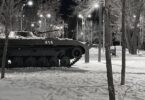
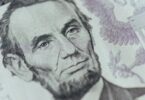
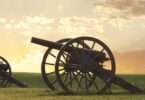

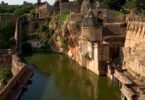
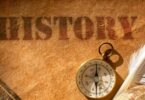
It was good
very good